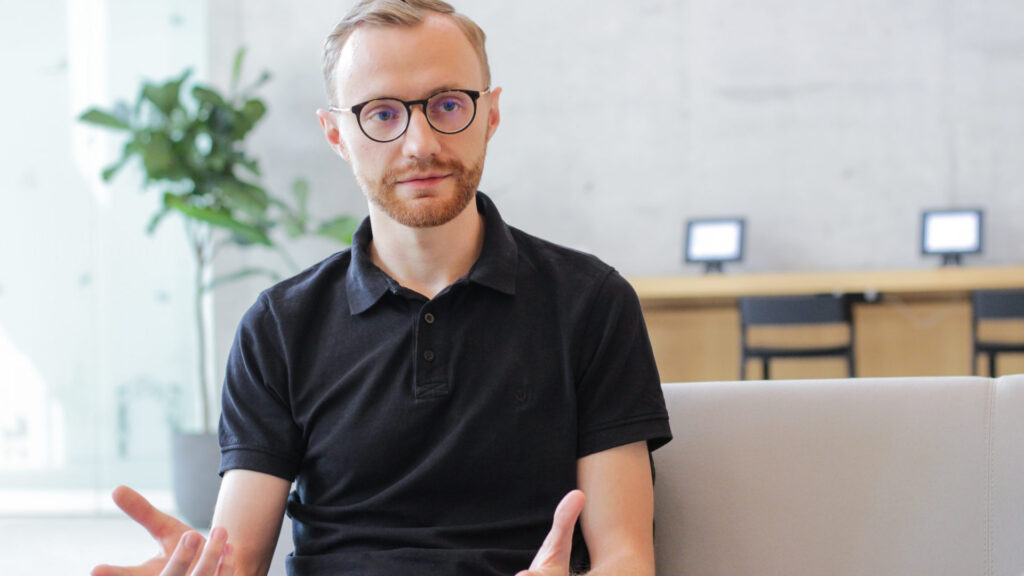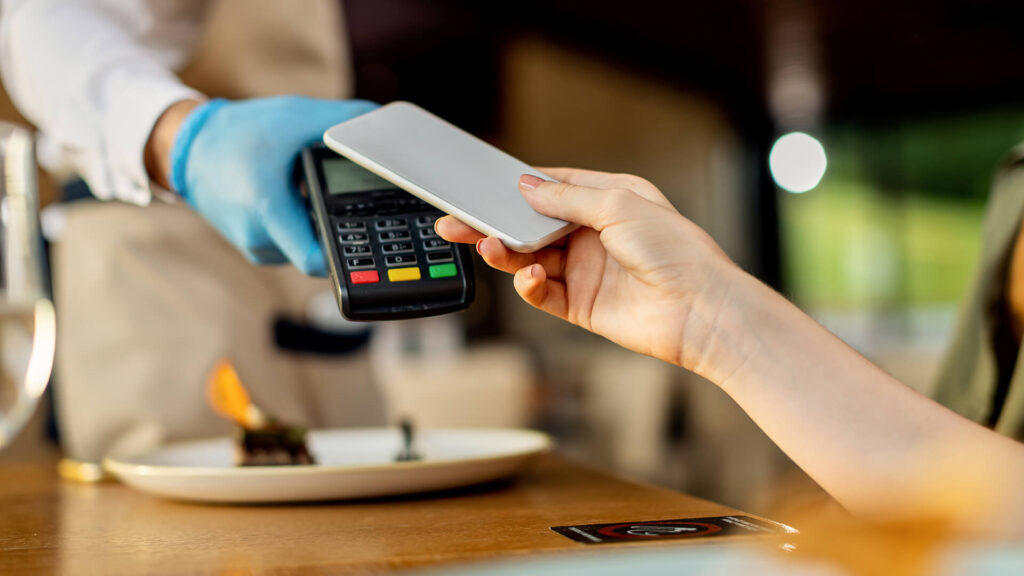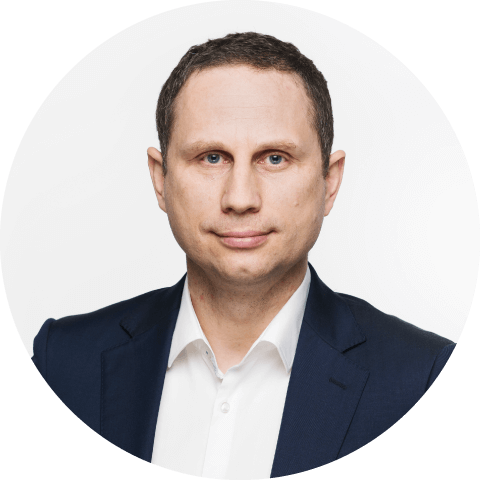MedBand wellness tracker: the future of healthcare & fitness
At Spyrosoft, we’re collaborating with different sized companies to develop their services and products, providing not only our expertise but also our skills and resources. In today’s blog, we’d like to present one of the projects we’ve been supporting.
Andrzej Akseńczuk, the project’s creator and the project’s coordinator, Magdalena Cisowska are talking about MedBand, a wellness tracker that they’ve been working on and that is about to be commercialised.

What is MedBand wellness tracker?
Andrzej Akseńczuk: The idea for the product came to me a few years ago when I was talking to one of my friends. His son had had an accident a few days before and had broken his arm. My friend was getting a bit worried about getting him to exercise at the physical therapy sessions. We thought that it would be fantastic to make something to encourage him to keep at it and that they could use at home.
That’s how the MedBand wellness tracker project started. The activity tracking band development has always been divided into two different paths. The first one is focused on physical therapy and making it accessible to more patients who need long-term treatment. This will require our team to get the product certified in line with the medical regulations of ISO 13485 and ISO 14785. MedBand is designed as a medical product and we’re now in the process of getting certifications. As the project progresses, we should also be able to add functionalities for monitoring patient’s overall wellbeing.
The other path is fitness and tracking users as they exercise at the gym or at home, with limited support from a personal trainer. MedBand can act as a trainer or coach, showing us whether we’re following the exercises in the correct way and whether we should stop or continue training. The users can train wherever they are, at any time.
The product itself will have only three sensors. Users will be able to track their movement using the band and then see it on their mobile phone or tablet screen.
Who is MedBand for?
I’m very proud as we wanted to make the product as accessible as possible for anyone, including elderly and people with compromised mobility. That’s why we’ve introduced an additional module during the registration process where people will be able to choose how advanced they are when it comes to exercising. This way we will be able to modify the sets in line with their abilities and needs.
Magdalena Cisowska
Are there any similar wellness trackers currently on the market?
A: I know of two companies who tried to introduce a similar product on the market, but they weren’t successful. The unique element of our solution is the fact that it uses Artificial Intelligence algorithms to estimate the movement track. It then uses real data from the sensors to make sure the estimation has been correct and that the patient is following the training.
The thing that also differentiates MedBand from other wellness trackers is the fact that there’s a minimal number of sensors included in the product. Other similar products usually have a large number of sensors which makes them difficult to move in and carry around. From the beginning, we wanted our product to be mobile and easy to use anywhere.
M: As far as I know, MedBand wellness tracker is the first product of this type in Poland and in Europe, the other attempts were from companies in the US and Japan.

What’s the current progress of the product?
A: We’re currently developing a third iteration of the product and we have 7 people onboard working full-time on this solution. The last version meets medical standards. In the future, MedBand would be a set of four bands that would track different parts of the body and movements. Depending on the number of trackers, we’d be able to complete different exercises starting with arm curl to leg press.
The users can also record their perfect/ideal movement and then repeat it at home or at a gym or use the recording to validate others, i.e. their physical therapy patients.
M: The exercises would be developed by physical therapists and personal trainers and would be modified or adjusted to the person using the set. This will be set up in the application that’s being developed by our team alongside the hardware – the band itself. One trainer or therapist will be then able to work with a group of athletes or patients. The application is quite advanced at the moment, so we will focus now on improving functionalities in our hardware solution, on UX/UI tweaks and especially on its layout to make this product visually pleasant for everybody.
How are you planning to develop MedBand wellness tracker?
M: We’re currently collaborating with an industrial designer to get the product to the commercialisation stage. We would be then able to start producing it on a larger scale. We want the product to help people receive physical therapy and follow their fitness routines, but we also want it to look good and be easy to wear.
A: MedBand will be also tested by one of the fitness companies by a group of their personal trainers. They will be using it to exercise with amateur athletes. Once this stage is complete, we’ll be collaborating with the company to create another iteration of the tracker. I’d be also interested to see the product tested by professional athletes in the near future.
About the author
RECOMMENDED ARTICLES
Contact us




